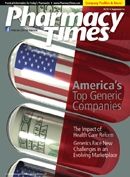Publication
Article
Generic Supplements
Introduction: Reducing Our Nation's Health Care Costs
Author(s):
A revealing GPhA research report on brand name and generic prescription drug sales demonstrates how much generic medicines have saved consumers, as well as state and federal governments, over the past decade.
As pharmacists know better than most, providing generic medicines to consumers often makes the difference between whether a patient can afford a medication or not. Every day, you see the economic difference generics make in individual lives. Imagine the savings that are achieved nationwide!
Simply put, the savings are extraordinary. IMS Health, the world’s leading provider of market intelligence to the pharmaceutical and health care industries, was commissioned by the Generic Pharmaceutical Association (GPhA) to provide and analyze brand and generic prescription drug sales data for the 10-year period from 2000 to 2009. According to this new IMS analysis, generic medicines saved consumers and state and federal governments over $139.6 billion in 2009—and $824 billion during the last decade. Patients using generic medicines saved $382 million a day, or more than $1 billion every 3 days, in 2009. These are dramatic savings no matter how you look at it!
Nearly three fourths of all prescriptions dispensed in the United States in 2009 were filled with generics. However, generics accounted for less than one fourth of the total amount spent last year for prescription medicines. This reliance on affordable generics has slowed the increase in overall prescription drug costs even as the prices for brand name drugs continue to rise. In May 2010, a report from the AARP showed that while brand name drug prices increased 9.7% over the 12 months ending in March 2010, generic prices dropped nearly 10% during that same period.
As the IMS analysis reveals, cost savings from new generic products also accumulate rapidly. More than $85 billion of the $139 billion saved in 2009 came from generics approved in just the last 10 years. Over this 10-year period, $263 billion of the $824 billion in total savings came from generics approved since 2000.
As the federal and state governments grapple with implementation of the nation’s new health care reform law, officials must keep in mind that increasing access to generic medicines can save the health care system billions of dollars. With estimates showing that health care costs will rise by $311 billion over the next decade, increased utilization of generics would dramatically bend the cost curve for states and the federal government.
Policymakers should also be promoting the use of generic medicines in state Medicaid programs. Health care reform includes an expansion of Medicaid that will bring an estimated 16 million currently uninsured persons under the program. One cost containment solution for states is greater reliance on the use of affordable generic drugs. Even a 2% increase in the Medicaid generic utilization rate could save $1 billion annually—or $10 billion over the next decade. Additional savings could be achieved in other statesponsored prescription drug benefit plans through greater utilization of generics.
On the federal level, Congress should ensure that the FDA’s Office of Generic Drugs is robustly funded so it has the resources needed to enable timely review of generic drug applications. American patients and payors, including the federal government and the states, lose billions of dollars each week that generic access is delayed. Access to new cost-saving generics also is facilitated through proconsumer and procompetitive drug patent litigation settlements. Over the past 10 years, patent settlements have enabled dozens of first-time generics to come to market many months before patents on the counterpart brand name drugs expired. For instance, settlement of the patent suit involving the antiseizure medication Lamictal allowed generic lamotrigine to come to market 3 months prior to patent expiration, saving patients more than $190 million during the early launch period. Similarly, significant savings will be generated by the recent launch of generic Effexor XR, also made possible by settlement of patent litigation.
Finally, the GPhA firmly believes that the savings success seen by generic utilization can be replicated in the biopharmaceutical marketplace. Although it is welcome news that the new health care reform law gives the FDA the authority to create a biogenerics pathway, the unprecedented market exclusivity provisions will have a severe detrimental impact on savings that could otherwise be achieved through biogenerics. By delaying the availability of biogeneric and biosimilar medicines, these unwarranted exclusivity periods will maintain monopoly pricing and thus keep lifesaving treatments out of reach for many patients.
With generic medicines saving nearly $140 billion in 2009—an astounding 15% jump in savings over the prior year—increasing access to safe and effective generics is a proven model for reducing our nation’s health care costs. PT







